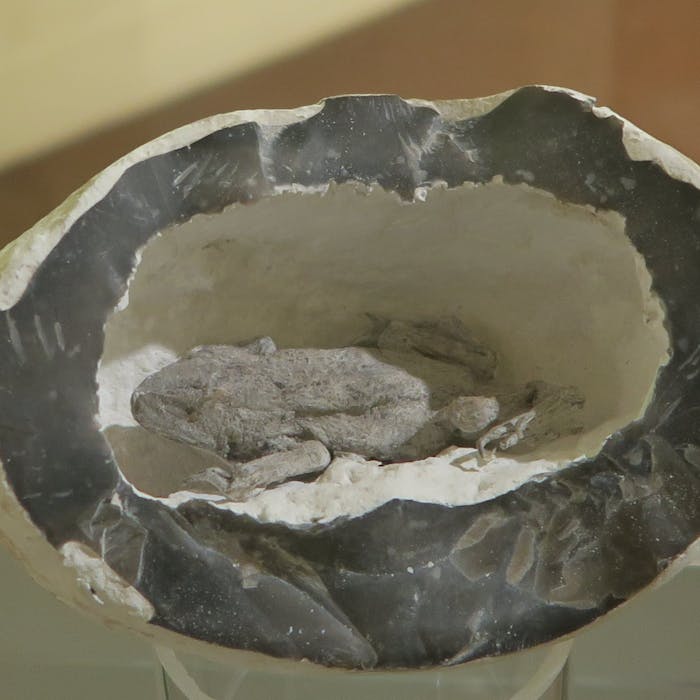
Entombed frogs and toads - mystery or myth?
For centuries, Britain's folklore has featured reports of the strange phenomena of entombed animals, usually frogs or toads, discovered alive within hollow rocks. But is there any truth in this story? And where did this idea come from?
This 'toad in the hole' phenomenon has been reported since the fifteenth century, but reached its peak in Britain in the early and mid-1800s. The idea was popular enough for Dickens to mention these curiosities in his journal All the Year Round.
Examples of the stories include a toad extracted from a block of stone by excavators in Hartlepool in 1865; a man who claimed to have freed 23 frogs from a single piece of concrete while widening a road in Devonshire; a British soldier working in a quarry during WWII who found one inside a slab of rock; and a lump of coal dug from a seam 300ft below Newport, Monmouthshire which went on display at London's 1862 Great Exhibition. With it was a frog that miners claimed to have found alive, encased in the coal - presumably millions of years old.
Claims like these intrigued and annoyed the English paleontologist William Buckland, who carried out a series of experiments during the 1820s to test the theory.
He placed toads of different sizes and ages into carved chambers within limestone and sandstone blocks, then buried the blocks in his garden. A year later, he dug up the blocks and found that most of the toads were dead and decayed. A few toads that had been in the limestone (which did contain small pores) were still living. However, Buckland found them all dead after reburying them in the limestone for another year.
Buckland concluded that toads could not survive inside rock for extreme lengths of time, and determined that reports of the entombed animal phenomenon were mistaken. Most scientists agreed.
Further reading
Links to external websites are not maintained by Bite Sized Britain. They are provided to give users access to additional information. Bite Sized Britain is not responsible for the content of these external websites.
